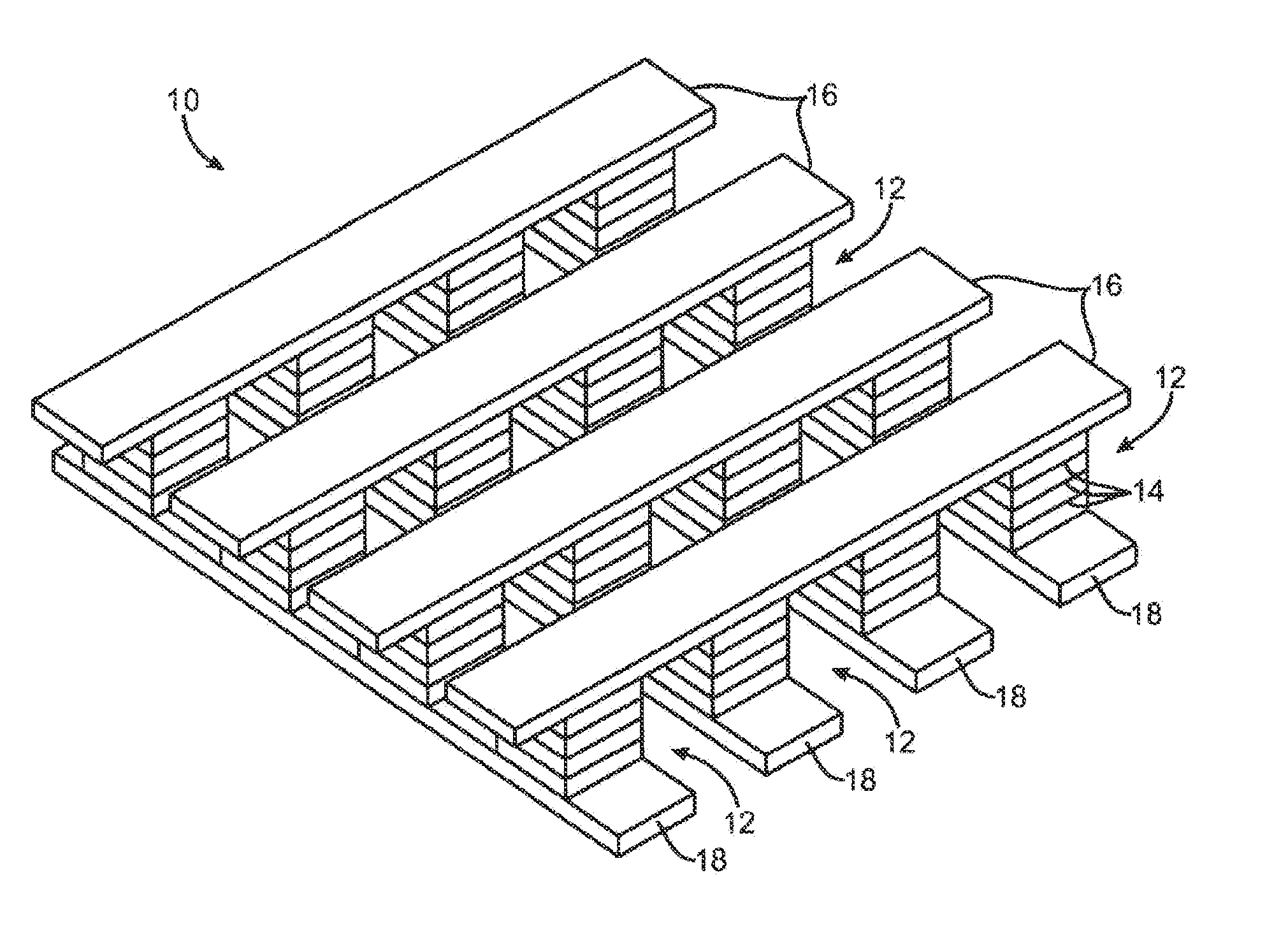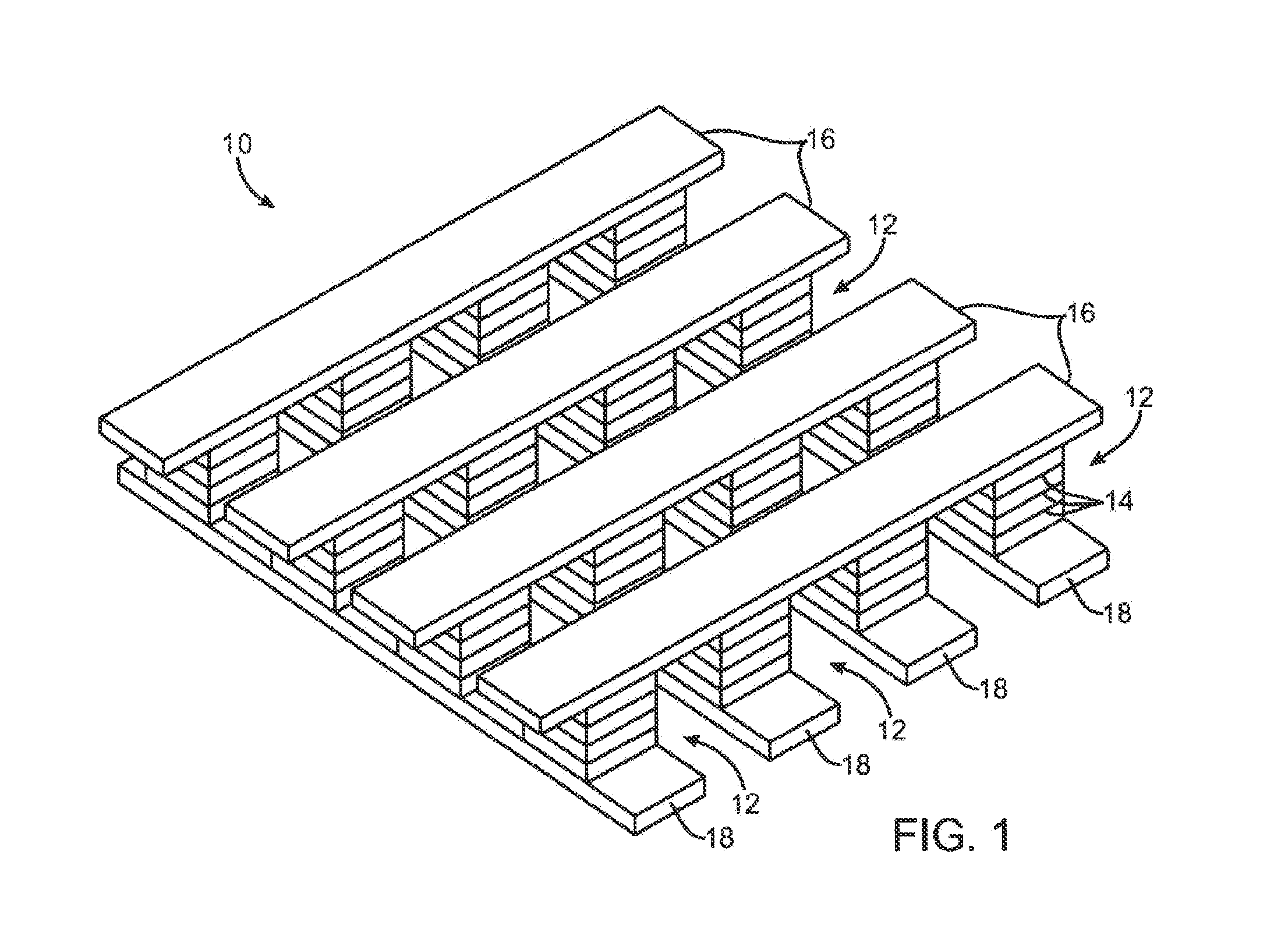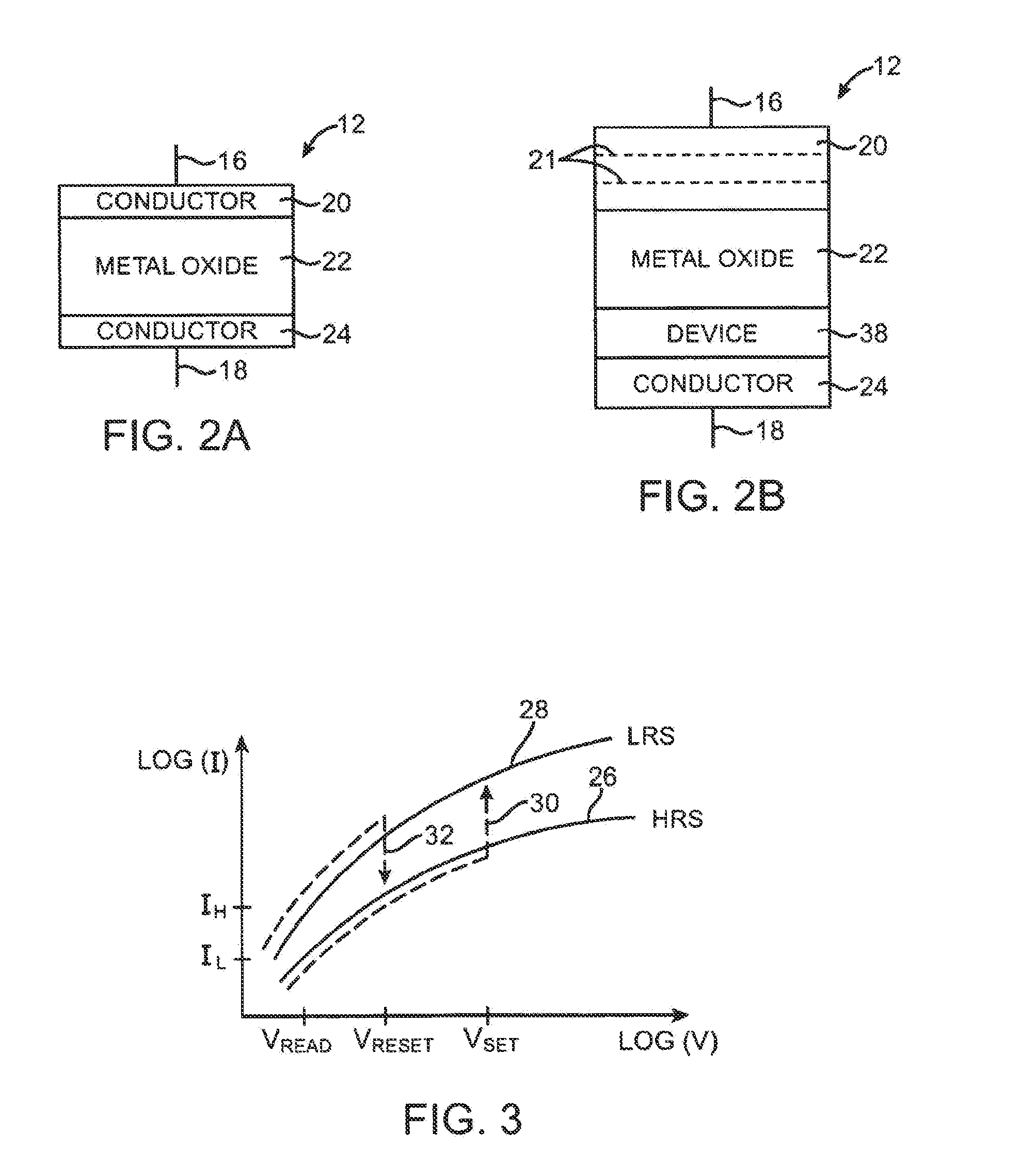Multifunctional electrode
a multi-functional, electrode technology, applied in the direction of bulk negative resistance effect devices, vacuum evaporation coatings, coatings, etc., can solve the problems of difficult to use a low resistance metal oxide layer to form a reliable nonvolatile memory device, the resistance of these layers and/or the ratio of high-to-low resistance states is often insufficient to meet the needs of traditional nonvolatile memory technology, and the problem of scaling issues, etc., to achieve the effect o
- Summary
- Abstract
- Description
- Claims
- Application Information
AI Technical Summary
Benefits of technology
Problems solved by technology
Method used
Image
Examples
example
Example 1
Tantalum nitride Resistivity for Layers Made by Reactive Sputtering
[0079]Tantalum nitride, hafnium nitride, and tantalum silicon nitride layers were prepared using either PVD (dc reactive sputtering at 200 W in a 5 mTorr Ar / N2 atmosphere with varying N2 flow rates) or ALD (using alternating pulses of a metal precursor and NH3 at a substrate temperature of 200-260 C; metal precursors included tetrakis(dimethylamino)hafnium as a Hf precursor, pentakis(dimethylamino)tantalum as a Ta precursor, and tris(dimethylamino)silane) as a Si precursor.
[0080]Samples of TaN produced by PVD with a nitrogen flow rate above about 50% generally had resistivities in the range of interest (0.1-10 Ω cm) as did the TaSiN sample. MN samples showed useful resistivities for nitrogen flow rates in the range 10-15%. The data suggest that the resistive layers comprising a sub-stoichiometric nitride or sub-stoichiometric oxynitride having the desired current limiting resistivity for any particular devic...
PUM
| Property | Measurement | Unit |
|---|---|---|
| resistivity | aaaaa | aaaaa |
| resistivity | aaaaa | aaaaa |
| total pressure | aaaaa | aaaaa |
Abstract
Description
Claims
Application Information
 Login to View More
Login to View More - R&D
- Intellectual Property
- Life Sciences
- Materials
- Tech Scout
- Unparalleled Data Quality
- Higher Quality Content
- 60% Fewer Hallucinations
Browse by: Latest US Patents, China's latest patents, Technical Efficacy Thesaurus, Application Domain, Technology Topic, Popular Technical Reports.
© 2025 PatSnap. All rights reserved.Legal|Privacy policy|Modern Slavery Act Transparency Statement|Sitemap|About US| Contact US: help@patsnap.com



